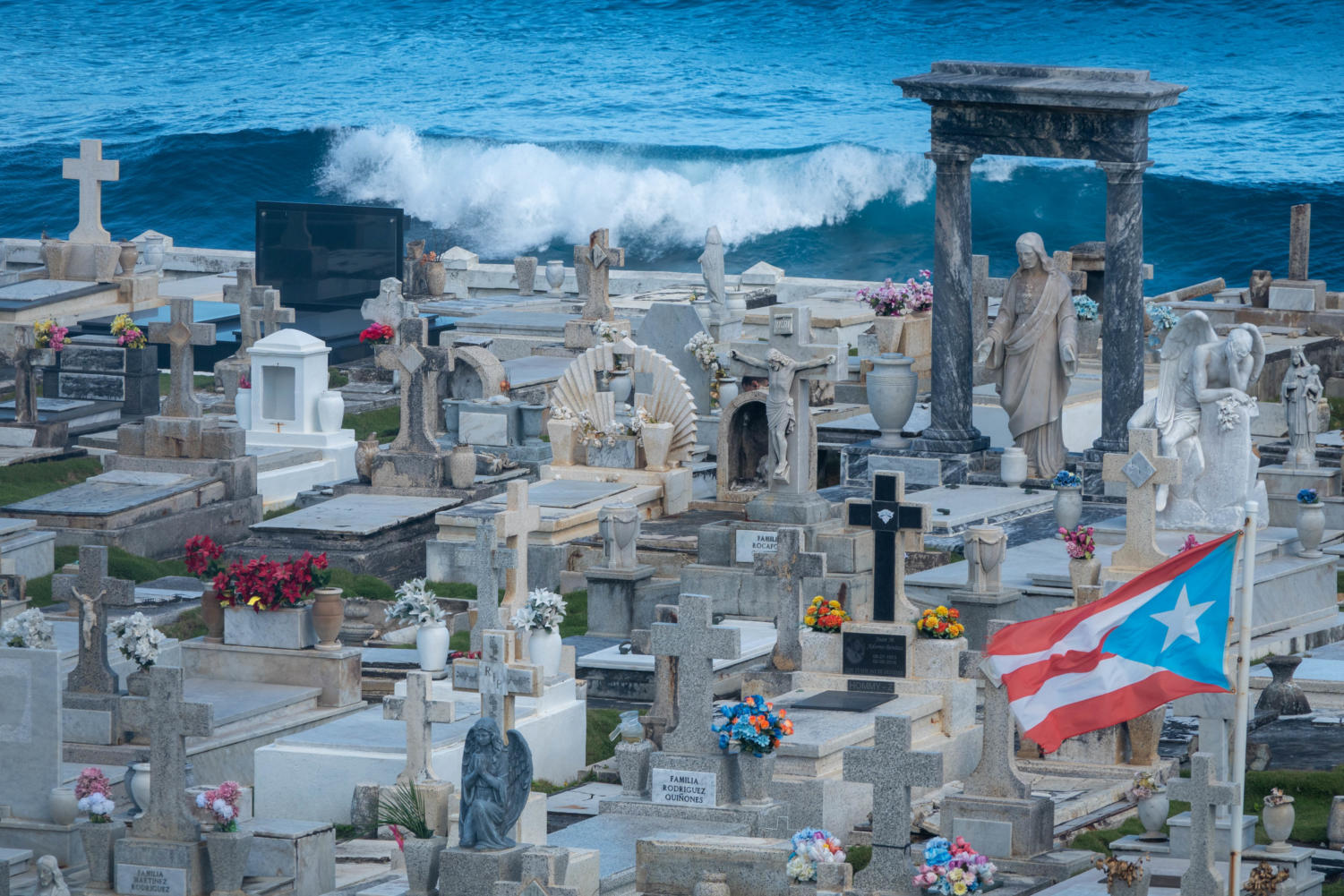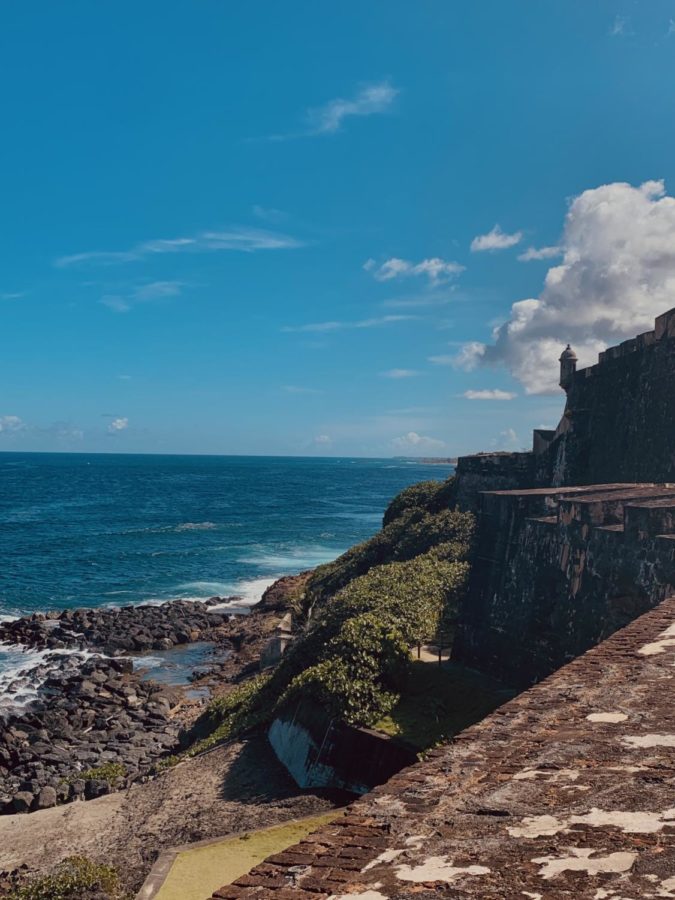Bienvenidos a Puerto Rico
February 21, 2022
Please stand 5 pies apart.
What are you thinking? Five pumpkin pies – Costco sized? Five shepherd’s pies – mashed potato topped? Five minced pies – to go with the Christmas theme as Puerto Rico breaks out the Christmas trees?
Not quite.
Puerto Rico is truly a mezcla (mix) of languages – Spanish and English. So it is, this sign warns passer-byers to stand at a distance of ‘5 [cinco] pies,’ or, in English, ‘5 [five] feet’ apart.
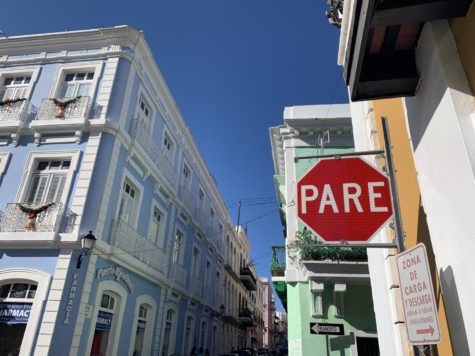
The Taxi driver stops at the Pare (Stop) sign and rolls down the windows. Outside, in the darkness of the night, music is playing.
San Juan is celebrating its 500-year birthday, the oldest city in the United States and its territories.
This rich history is not surprising as cars squeeze past each other on narrow cobblestone roads on the way to the hotel – El Convento – a convent-converted-hotel boasting 360 years and vibrant color in its Spanish Colonial architecture.
Having survived through abandonment, conversion to flophouse, dance hall, and retail store, El Convento now turns tourists out into the square prowling with cats next to which stands the Catedral de San Juan Bautista, Puerto Rico.
Nearly as old as the city of San Juan itself, the high ceilings and sunburst stained-glass windows of the cathedral shelter, perhaps most famously, the tomb of Juan Ponce de León.
Forts and Flags

However, the cathedral is not the main attraction. Old San Juan is known more for its forts, Castillo de San Cristóbal and, most famously, Castillo San Felipe del Morro, or, in punchier terms, El Morro.
El Morro has a military history extending from Spanish colonization through World War II where it has stood guard over San Juan.
Partnered with Fortín San Juan de la Cruz, El Cañuelo for nicknames sake, the Dutch, British, and pirates were all turned away from the shores of Spanish Puerto Rico.
In the hands of the United States after the Spanish-American War, El Morro served in both world wars as a part of Fort Brooke.
Today, kites can be seen flying over the vast green lawns that carpet the path to El Morro as children chase the iguanas that climb the fort’s walls.
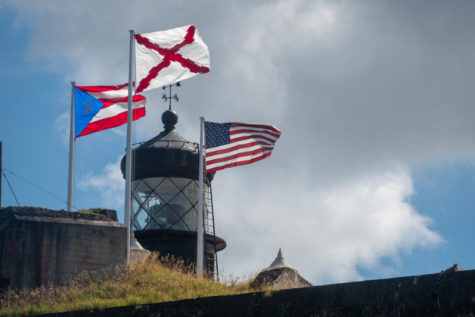
Designated both a National Park Service and World Heritage Site, El Morro is titled “Symbol of Power, Source of Pride” by one of the various signs that guide tourists through the winding levels of the castillo (Castle).
This island and its mezcla of languages fly over the walls of all fortifications at San Juan National Historical sight.
Three flags fly in line: that of the United States of America, Puerto Rico, all the way back to the Burgundy Cross which flew as the Spanish military flag under Spanish colonial rule.
A Glimpse Beyond San Juan
If stone walls and tiled street signs are not enough, San Juan yields to beaches and rainforest.
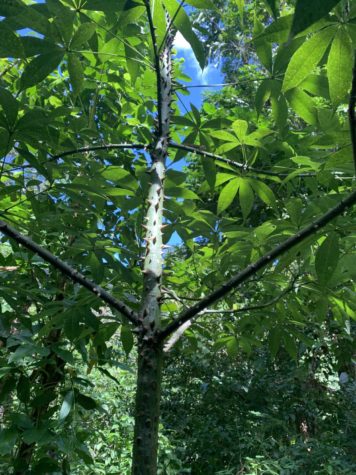
Past the idyllic Caribbean sands and glistening waves lying open, like all Puerto Rican beaches, to the public.
A quick stop to try the meat-stuffed empanadilla and sorullos reminiscent of cheese-stuffed cornbread.
And you can be within reach of either horseback or ATV rides through the greenery of the only rainforest managed by the U.S. Forest Service, El Yunque National Forest.
Home to the spikes of the silk floss tree and call of the male coquí frog whose resonating co and kee mix together in a single sound intended to both drive away other males and attract females, El Yunque is a center of biodiversity.
From the iridescence of the peacock fern, green then blue then purple, to the freshwater scattered with fish, El Yunque teams with life.
History in Bronze
Mezcla.
Ask Google what the perfect human is, and you’ll see the words “Puerto Rican” scrolling down the page.
Having ancestry that traces back through the native Taíno, conquering Spanish, and African slave, Puerto Ricans have more than a strong mix of genes, but a proud mezcla of cultures.
A little way off from the Paseo de los Presidentes, commemorating all of the United States presidents that have visited Puerto Rico, is a bronze mural reenacting Puerto Rico’s centuries of history.
Time flows fluid across its surface while anchored in remembrance within its metal surface. It begins:
De tu Historia
The Taínos were the natives of Puerto Rico, who greeted the Spanish peacefully when they first arrived on the island, led by Ponce de León.
Y tu Lucha Heroica
When a cycle of submission, death, and misery was cast over the indigenous Taínos by the Spanish, they were led to battle by Agüeybaná el bravo (the fierce), defeated in 1511, but resisting longer.
Emanan tu Dignidad
With a declining indigenous population, the Spanish brought African slaves to carry the weight of the island, fast becoming known as the “Key to the Indies” and envy of other European powers that were fought off from its shores.
Tu Perseverancia
The Puerto Rican identity thrived into the 18th Century with artists, educators, religious leaders, Spanish constitution signatories, and abolitionists.
Tu Grandeza
The 20th Century saw Puerto Rico ceded from Spain to the United States, the women’s vote granted, and three Organic Acts establishing a civilian government, American citizenship, and the Constitution of Puerto Rico.
Y tu Cultura
Puerto Rican culture now lives, a mixture of roots manifested in music, literature, painting, and, as in the relief, history and culture.
In English, those words carved in Spanish under the bronze translate to:
From your History and your Heroic Fight Emanates your Dignity, your Perseverance, your Greatness and your Culture
Food: Sweet and Salty
Puerto Rican food is as proud of a mix of cultures, and flavors, as other aspects of Puerto Rico.
Among a variety of seafood, plantain-based dishes, mofongo, and the famous Puerto Rican drink so good it’s been eternalized in song, the Piña Colada, is the restaurant Raíces.
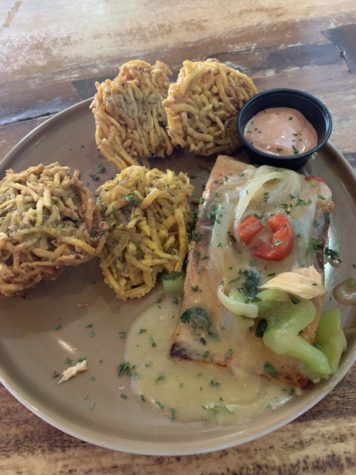
Aptly named, the walls are adorned with murals depicting just how deep those Puerto Rican raíces (roots) go, from Taíno to African.
Sitting with ocean on all sides, it should be no surprise that Puerto Rico appreciates the flavor of seafood as few menus can escape the taste of the sea.
Shrimp to octopus to conch meat can be found just in the dedicated “Mofongo” page of the Raíces menu. In fact, they can be found in a single dish of “Mariscos Mixtos” (Mixed Seafood) mofongo, if desired.
Here we have another thing that few Puerto Rican menus are without: Mofongo.
The fact that this dish is made of plantains, fried and mashed, is about the only guarantee. From seafood to chicken to vegetables, it’s harder to find a food mofongo can’t be mixed with than one it can.
Even without mofongo (though the thought is audacious), plantains scamper throughout the menu.
Arañitas, contrary to what their name (Little Spiders) suggests, are not eight-legged creatures, but strips of plantain, fried into crunchiness.
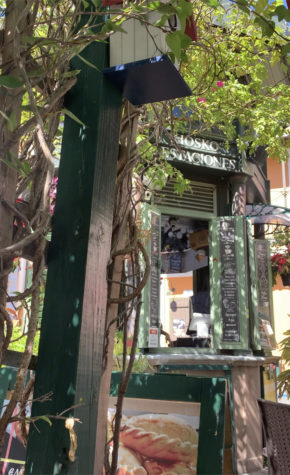
Fried plantain tostones resemble circles drawn with a shaky hand, colored in with a bit of saltiness while sweet plantain amarillos are softer than their tostone and arañita cousins.
And that’s just the side dishes.
However, some of the best tastes of San Juan can be found at the stalls, small and painted green in a bustling courtyard, whose names do not extend beyond “Kiosk Stations.”
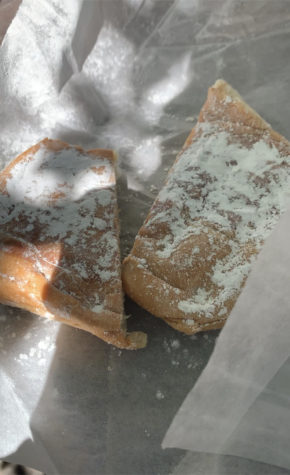
Forever ones to mix flavors, sweet and savory, beyond the cheesy-corn-bread goodness of the sorollito is a delectable sweet bread that can be found at these Kioscos.
While we would never consider sprinkling powdered sugar over ham and cheese, the fluffy bread of the mallorca sandwiched in between the two flavors makes a mouthwatering sweet and savory meal.
And, since I’ve talked you through to desert, there’s one pastry I will take all my breath to rave about: the quesito.
Cream cheese stuffed, pastry twisted, sprinkled in sugar, their flavors are simple, but simplicity has never tasted better.
If there is one word you need to know when talking about Puerto Rico, it is mezcla. A mix of cultures, a mix of flavors, a mix of wonders.
